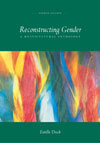 |
1 |  | 
In Reading 37 (The Transformation of Family Life), Lillian Rubin states that while working different shifts helps couples cope with childcare issues, it is burdensome on marriages. |
|  | A) | True |
|  | B) | False |
 |
 |
2 |  | 
According to Patricia Hill Collins in Reading 38 (Bloodmothers, Othermothers, and Women-Centered Networks), women's centrality in African-American family life is characterized primarily by the absence of husbands and fathers. |
|  | A) | True |
|  | B) | False |
 |
 |
3 |  | 
In Reading 39 (Dilemmas of Involved Fatherhood), by Kathleen Gerson, fathers who become equal or primary parents are subjected to discrimination similar to that experienced by women in male-dominated occupations. |
|  | A) | True |
|  | B) | False |
 |
 |
4 |  | 
In Reading 40 (Man Child: A Black Lesbian Feminist's Reponse), author Audre Lorde describes the struggles she has raising a son who is unaccepting of her and her lesbian lover. |
|  | A) | True |
|  | B) | False |
 |
 |
5 |  | 
According to Audre Lorde in Reading 40 (Man Child: A Black Lesbian Feminist's Reponse), men become trapped in dependency and fear if they rely on their mothers for their emotions. |
|  | A) | True |
|  | B) | False |
 |
 |
6 |  | 
In Reading 41 (I Am a Man), author Raul Ybarra describes struggling with farm work in order to prove his masculinity to his father. |
|  | A) | True |
|  | B) | False |
 |
 |
7 |  | 
According to E.J. Graff in Reading 42 (What is Marriage For?), marriage has always been a social battleground, with its rules constantly shifting to fit each culture and class, each era and economy. |
|  | A) | True |
|  | B) | False |
 |
 |
8 |  | 
In Reading 37 (The Transformation of Family Life), author Lillian Rubin studies families differing along what lines? |
|  | A) | sexual orientation |
|  | B) | number of children |
|  | C) | married versus unmarried |
|  | D) | socioeconomic status |
 |
 |
9 |  | 
In Reading 38 (Bloodmothers, Othermothers, and Women-Centered Networks), by Patricia Hill Collins, bloodmothers are: |
|  | A) | surrogate mothers |
|  | B) | "other" mothers |
|  | C) | aunts who are like mothers |
|  | D) | biological mothers |
 |
 |
10 |  | 
In Reading 39 (Dilemmas of Involved Fatherhood), by Kathleen Gerson, which of the following is NOT included as one of the benefits of involved fatherhood? |
|  | A) | emotional gratification |
|  | B) | respect among other primary caretakers |
|  | C) | work flexibility |
|  | D) | marital peace |
 |
 |
11 |  | 
In Reading 41 (I Am a Man), author Raul Ybarra's major obstacle to leaving his abusive home was: |
|  | A) | protecting his brothers |
|  | B) | protecting his mother |
|  | C) | his fear of his father |
|  | D) | not having any work |
 |
 |
12 |  | 
According to E.J. Graff in Reading 42 (What is Marriage For?), we no longer see marriage as a labor contract, but as a _______________. |
|  | A) | love commitment |
|  | B) | mode for reproduction |
|  | C) | “jail sentence” |
|  | D) | unnecessary obligation |
 |



 2006 McGraw-Hill Higher Education
2006 McGraw-Hill Higher Education